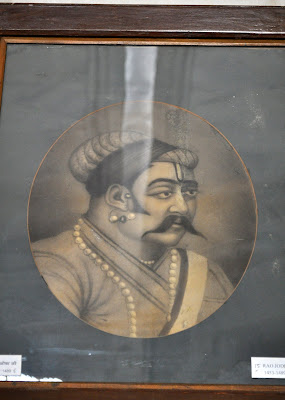A perfect day in Mumbai starts early. Wake up to the sound of seaguls from the port and the fishmongers who have already opened the Colaba markets at 5am. Start your morning with a stroll in old colonial Bombay between Victoria terminus and the Taj Palace. Be sure to head down MG road via the University (whose clock tower was modeled after Big Ben), the cricketers on Oval Maiden, and the English-Indian architecture that blends into the Prince of Wales Museum, built by the same architect as St Pancreas.
Sassoon Library - a welcomed oasis. For souvenirs try two addresses nearby. You could pick up a recent Indian CD from from Rhythm House Records across the street. Then dig through the antiques and curiosities at Phillips on Mukherjee Chowk circle, or tourist trinkets along Colaba Causway towards Sassoon Docks.
If the sun is already beating down on you, pop into the High Court for an animated trial or have a relaxing read on the balcony of the Sassoon Library - a quiet oasis. Eventually make your way to the India Gate where a mid-morning harbor crossing will take you to Elephanta Island. Here there is an abundance of ancient cave carvings to explore while protecting your food and drinks from the island’s monkey inhabitants.
Elephanta Island - The portugese used this island as a training ground for rifle practice. Today you are serious risk of getting your food or drink swiped by some very cheeky monkeys.
After an hour, hurry back to the city and hop into a 1950’s Fiat style bumble cab to Swati Sweets for lunch. Here you can sample Mumbai’s best ‘chaat’ (snacks) without tempting Delhi belly on the street. Wash it down with an alfonso mango lassi, if they are in season.
India Gate and the iconic bumble bee cab that weave through traffic with a rickety engine hum. But traffic here is notably quiter than Delhi since horns have been banned inside Mumbai. Drivers must also use their meter - a welcomed change to stressful haggling in the rest of India.
Mumbai can get hot and sticky in the mid afternoon. Catch a ride to the Liberty Cinema to take in a matinee of the latest bollywood film in art deco splendor. Unfortunately one-screen cinemas are becoming endangered spaces since the creation of the multiplex. However if you have saved some energy, try to brave the crowds and commotion of the Chor Bazaar ‘thieves market‘. Then end your day as many Mumbaikers do at Chowpatty Beach with a stroll a delicious sweet, salty and tangy ‘Bhel Puri’ snack.
Make it your mission to hunt down Mumbai’s famous snacks. Start with some Pankhi steamed pancakes. Then try a pav bhaji or ragda pattice. But be sure to pick up some Bhel Puri - a combination of puffy rice, crunchy graham, tomatoes, onions, mint chutney, peanuts, coriander and lime.
From here you could attend an evening bollywood dance class at the nearby Gold’s Gym. But I think it’s more likely you will need to head back to the hotel room for a much needed re-charge. You could treat yourself to some fine dining at Indigo near the Taj Palace... Just be sure to finish the day with a beer at Leopold’s - a time honored meeting place for ‘westerners‘. Bollywood may beckon a third time since many casting agents seek next day extras or foreign voice overs for a modest wage. And if you have another day, why not? It’s Mumbai!
Leopold’s - Always buzzing with life. Note the bullet holes still riddled across the center window. Sadly, security guards now stand at each entrance since this was one of the western hangouts targeted by terrrorists on November 26, 2008.


















































